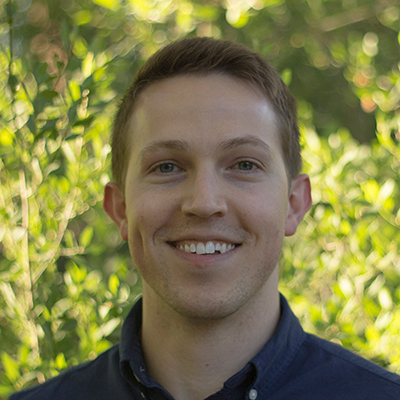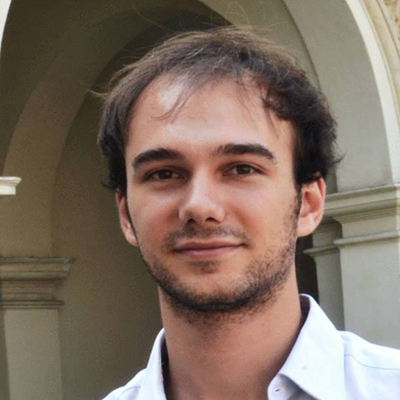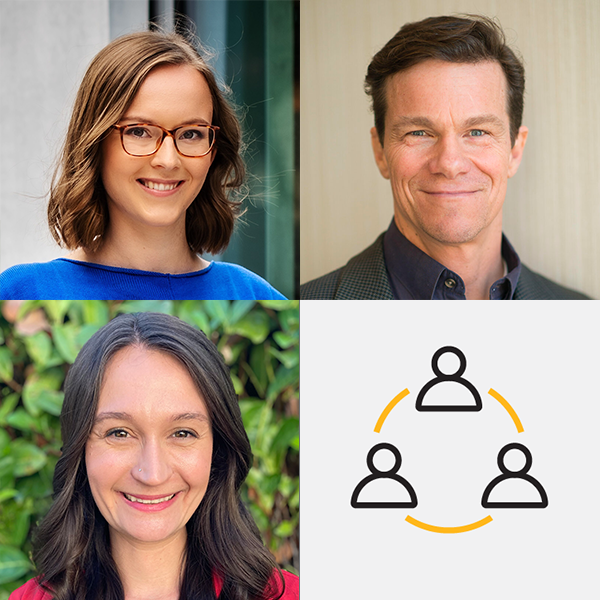Cosa state facendo tu e la tua azienda per ridurre le emissioni di carbonio incarnate?
Kevin Harris
Director of Technical Services at Verdacity
I deal with the fundamentals of what makes something “sustainable”. What impact do materials and systems have on the planet, and on the people in or near the structures we build? My goal as a professional is to broaden the scope of what we, as a society, consider when making every decision. This mentality has broad impacts ranging from the small-scale procurement of necessities and daily consumables to the material palettes of large-scale developments with decades-long impacts. When we consider not just the system, but the entire timeline within which our projects and designs are operating, it fundamentally changes the conclusions on what is both fiscally and environmentally responsible.
The data I provide in my material lifecycle analyses are used not only to document compliance with various green certification standards, but to help architects and building owners make smarter decisions. It is my personal belief that too long has waste been an accepted byproduct of the way we live and operate. We have an incredible opportunity to change that. With a new generation of emerging tools and data, we can begin to realize a future where we accomplish more, but with better materials and less energy. As more organizations are mandated or compelled to report on their environmental impacts, the smarter our decisions need to be. We believe that carbon accountability is a critical aspect of ethical business practices, and that collaboration is the best way to spark change across our industry.
Verdacity works to prioritize human health and wellbeing within built environments that harmonize with their communities and climates. This year we are celebrating a decade of contributing innovative sustainable solutions to design and construction projects across the US. Over the years we have honed the art of making complex concepts approachable and overcoming cultural obstacles to change. In January 2023, Verdacity became a Certified B Corporation™, furthering our commitment to transparency and verified performance at the center of our business.

Kevin Harris
“Too long has waste been an accepted byproduct of the way we live and operate. We have an incredible opportunity to change that. With a new generation of emerging tools and data, we can begin to realize a future where we accomplish more, but with better materials and less energy.”
What are you and your organization doing to help reduce embodied carbon emissions?
Gianna Bacher
Marketing Coordinator at Mortenson | Building for the Greater Good
My passion for appreciating and protecting the natural environment was instilled through summers spent at the beach and on family camping trips while growing up in Southern California. I wasn’t quite sure how I could translate that passion into my career later in life, but I knew I wanted to be a part of making a positive impact. My desire to create change towards a more sustainable future and increase others’ awareness of its importance only solidified my choice to pursue a combination of marketing, sustainable business, and environmental studies degrees at Gonzaga University.
It’s no secret that the built environment generates at least 40% of annual global carbon emissions, via a combination of traditional construction practices, building operations, and materials used. I was motivated to take my career towards an industry where I could utilize my skill sets while creating positive action towards improving it. In 2021, I joined Mortenson’s Seattle Marketing Team, excited to explore my interest in how I could positively shape the built space that impacts people and the environment.
A pillar of Mortenson’s CSR, “Planet, focuses on our commitment to reducing the carbon footprint of the built environment and the energy industry while minimizing waste. We recently signed onto the Contractor’s Commitment, providing a road map for general contractors to measure firm-wide sustainability. The program’s key focuses on carbon reduction, jobsite wellness, waste and water management, and better material selection are all things we are dedicated to improving firm-wide at Mortenson.
Locally, we are devising solutions to reduce carbon from concept design to the end users and building’s operational experience. Our work on the Climate Pledge Arena, the world’s first carbon-zero arena, and a new CLT/mass timber, Zero Carbon, and Zero Energy project at Western Washington University are just the beginning of some exciting examples of what can be achieved when we combine these efforts. And it’s just the start of what believe will be a new emerging standard for future building and development. I am energized about what’s in store for our team as we continue brainstorming and implementing meaningful, innovative solutions to develop best practices that result in sustainable, healthy buildings.

Gianna Bacher
“We recently signed onto the Contractor’s Commitment, providing a road map for general contractors to measure firm-wide sustainability. The program’s key focuses on carbon reduction, jobsite wellness, waste and water management, and better material selection are all things we are dedicated to improving firm-wide at Mortenson.”
Cosa state facendo tu e la tua azienda per ridurre le emissioni di carbonio incarnate?
Arlind Dervishaj
Architect and doctoral researcher, School of Architecture and the Built Environment (ABE), KTH Royal Institute of Technology
I have a background in Architecture from the Polytechnic University of Turin in Italy. During studies, energy efficiency, renewables, and sustainability were topics of interest. There was also a growing interest in climate change with courses introducing life cycle analysis and costing for buildings, construction materials and aspects such as environmental impacts, upcycling, and material health, all for a more comprehensive evaluation of design choices. In addition, Italian culture is sensitive towards its built environment with a drive towards conservation, reuse of the built heritage, and urban regeneration. This cultural approach also influenced my design thinking, and I went on to write a thesis on the reuse of industrial buildings back in 2013 and an initial research experience on sustainability criteria for the design and operation of hospitals in the Italian context.
My career started as a practicing architect. Wanting to have a bigger impact, I did a second international master’s in Portugal, Slovenia, and Italy in 2019, to deepen my knowledge of novel digital design methods. My focus was on relating regenerative design, a holistic approach that strives for a positive impact on people and the planet, with design technology such as building information modelling (BIM), parametric design, and environmental simulations. This led to working with the largest design firm in Finland on a multitude of data-driven design workflows in projects, and afterwards joining KTH Royal Institute of Technology in Sweden for a doctoral degree last year.
At KTH, I am also part of ReCreate, a European-funded international research project. The main objective of ReCreate is to close the loop for concrete at the highest level possible by facilitating the deconstruction and reuse of precast structural elements. Prefabricated concrete structures are used for a variety of buildings such as commercial, industrial, and residential. Although many of these structures reach their functional lifespan eventually, load-bearing concrete panels can have longer lifespans. Therefore, the reuse of concrete has the potential to substantially reduce embodied carbon emissions and avoid the amount of waste from demolition.
Researchers from four universities, and industrial partners, in Germany, Finland, the Netherlands, and Sweden are collaborating on this interdisciplinary research project. Each country cluster is developing local pilots, from the deconstruction of an existing building, towards the reuse of elements in new projects, to demonstrate the potential and feasibility of reuse. The research involves the phases of deconstruction, digital data handling for precast elements, the redesign process, evaluation of environmental impacts/benefits, as well as technical, legal, and business models for reuse in the construction sector.

Arlind Dervishaj
“My focus was on relating regenerative design, a holistic approach that strives for a positive impact on people and the planet, with design technology such as building information modelling (BIM), parametric design, and environmental simulations.”
Cosa state facendo tu e la tua azienda per ridurre le emissioni di carbonio incarnate?
Jesse Walton
Associate Principal at Architetti Mahlum
As a young architect 20 years ago, just a few years out of RISD exploring what type of architecture I wanted to practice, I learned about the LEED rating system. It was a light bulb moment. Becoming a LEED AP helped me realize that the ideas behind “sustainable design” could be calculated and confirmed. The discovery that architectural design could be less subjective and more quantifiable? Count me in.
Around the same time, Mahlum completed Seminar II at The Evergreen State College; which became their first LEED Gold certified project and their first AIA COTE Top Ten winner. With my growing dedication to sustainable design, I joined Mahlum in 2007 to immerse myself in their professional imperative of environmental stewardship.
On May 8th, 2009, Mahlum signed onto the newly created AIA 2030 Commitment. This move pushed us to track and report our projects’ Predicted Energy Use Intensity (pEUI). While pEUI was not a common term at that time, we embraced it and it became mandatory for all teams to present their pEUI at project pin-ups to help Mahlum build a quantifiable understanding around energy efficiency. In order to maintain consistent reporting across multiple project types of different scales, I helped develop an energy “speedometer,” which is a graphic tool our teams use to streamline the presentation of energy use, renewables and envelope project data.
Since 2010, we’ve reported pEUI data to the AIA 2030 Commitment. But Mahlum’s first embodied carbon data was not reported until 2020 with just a handful of projects, but by 2021 we were able to report on all our firm’s projects using tools such as Tally, EPIC, and Build Carbon Neutral. From those efforts, we now utilize a Revit Tally template which allows all teams to run Tally models during design, and we’re leveraging Tableau to visualize each project’s pEUI reduction percentage, total operational and embodied carbon emissions, and we’ve created an exploratory dashboard to highlight embodied carbon hot spots in project materials.
It has been personally and professionally gratifying to participate in Mahlum’s efforts to reduce both operational and embodied carbon. My own desire to continue expanding my knowledge and share my passion for energy efficiency and quantitative design steered me into becoming a Certified Passive House Consultant. And now with 20 years of experience in the world of sustainable design, I was selected to sit on the AIA 2030 Working Group in 2022.
It’s fulfilling to see in two decades’ time, sustainable design principles in LEED and Passive House being baked into our project requirements, energy codes, design, and construction practices. Designing for low embodied carbon feels quite nascent, but my hope is that through all of our efforts, like with the people involved with the CLF, low/zero carbon design will soon be baked into all facets of our work.

Jesse Walton
“Mahlum’s first embodied carbon data was not reported until 2020 with just a handful of projects, but by 2021 we were able to report on all our firm’s projects using tools such as Tally, EPIC, and Build Carbon Neutral.”







